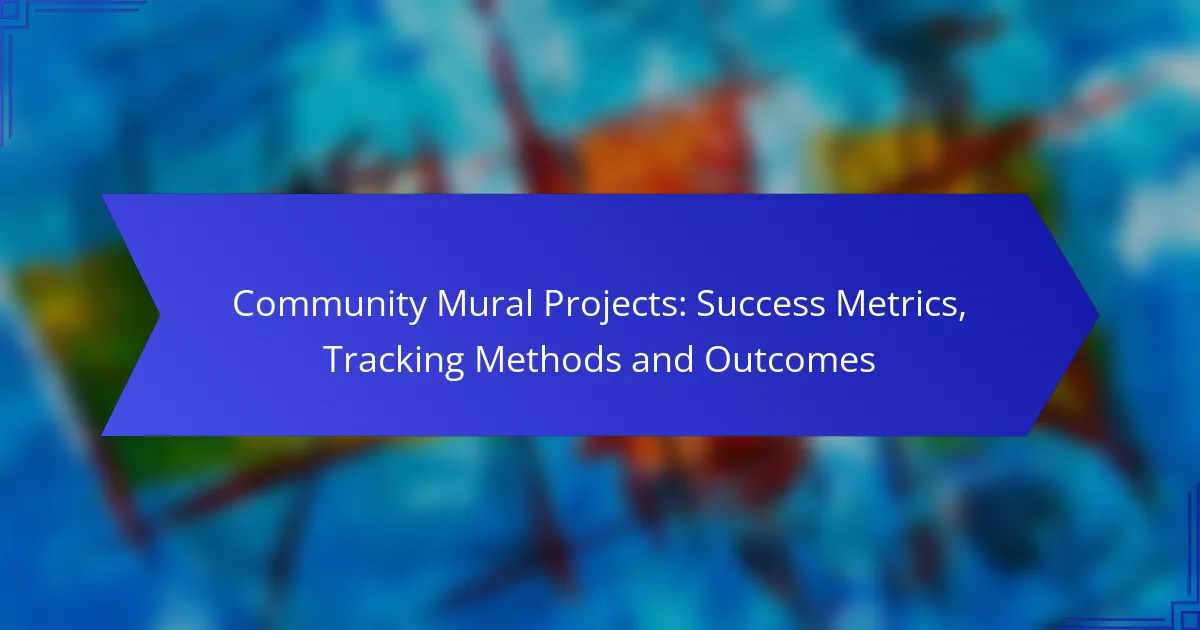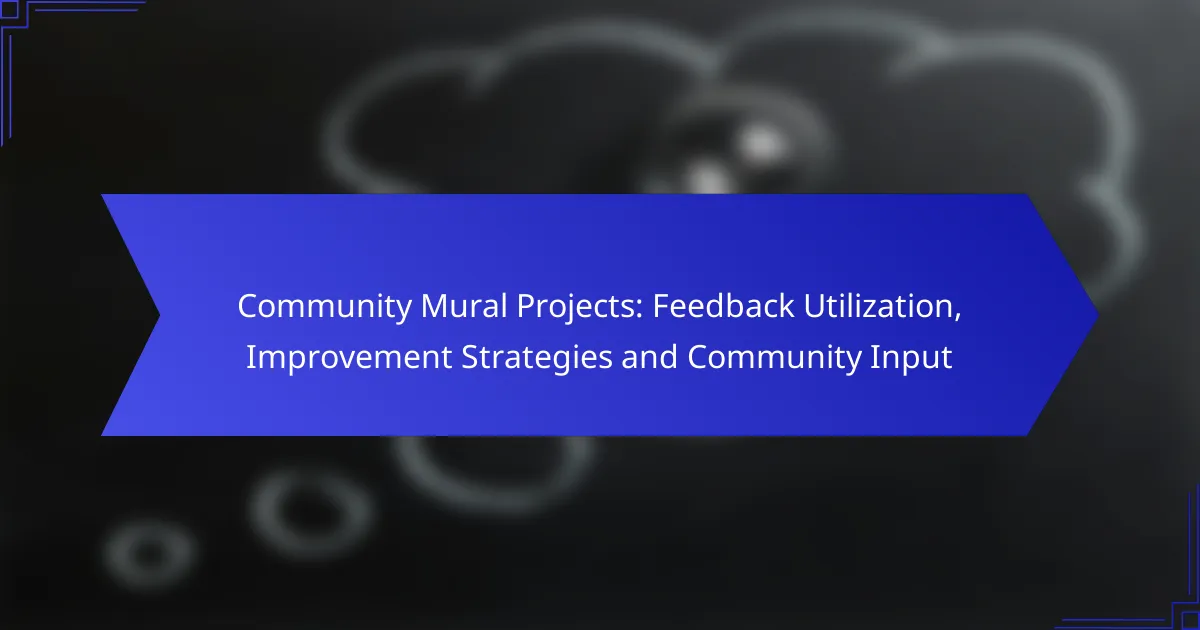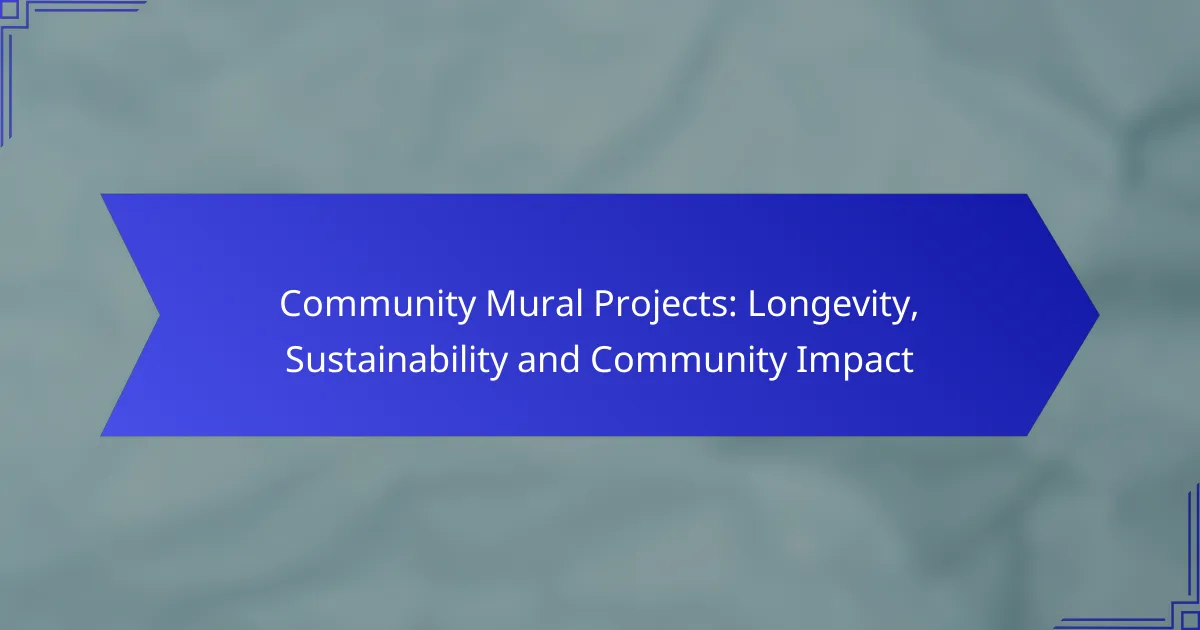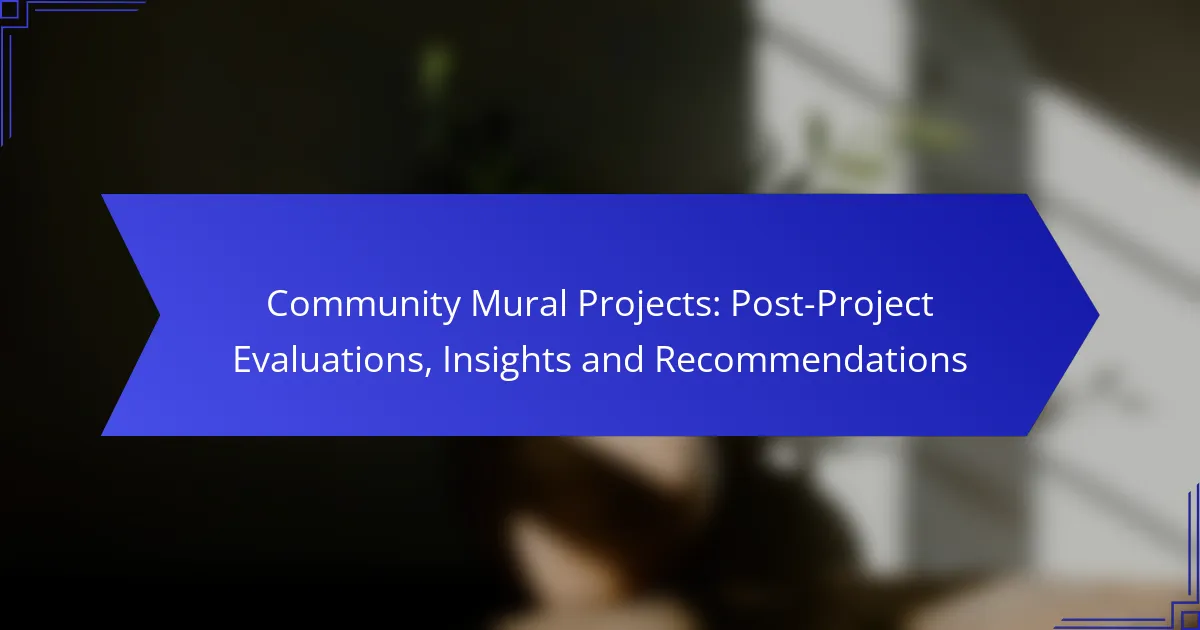Community mural projects thrive on active participation and feedback from local residents, making effective evaluation methods essential. Utilizing tools such as surveys, focus groups, and pre- and post-project assessments allows project leaders to gather valuable insights and ensure the mural aligns with community needs and preferences. By leveraging online survey platforms and mobile feedback apps, organizers can efficiently assess public sentiment and evaluate the mural’s impact on the community.
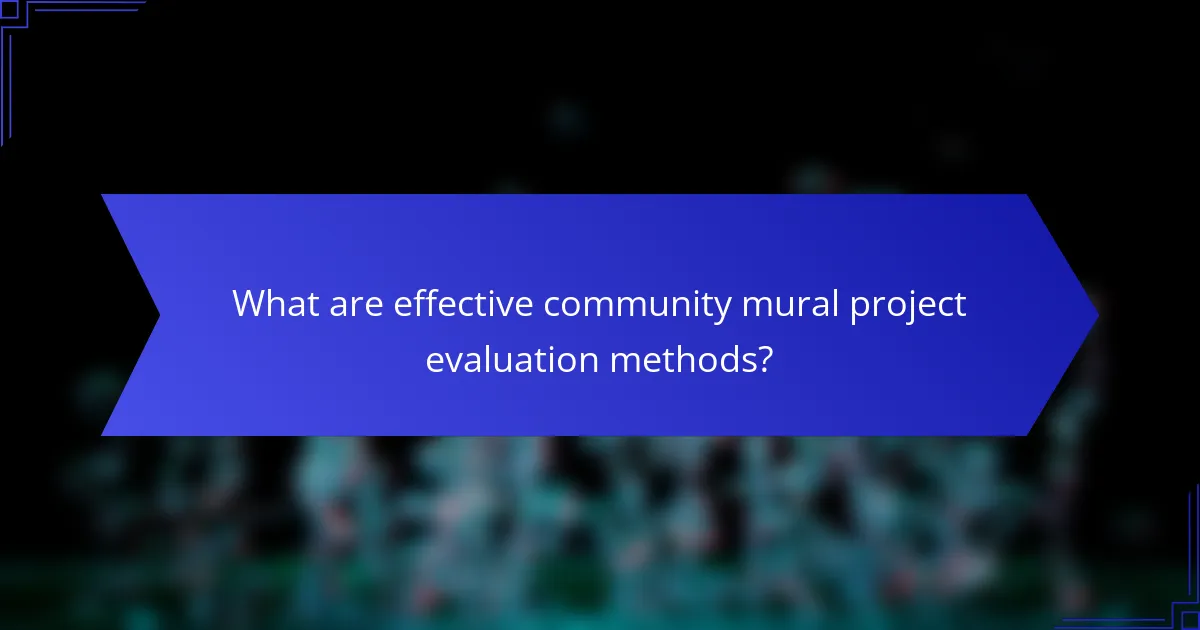
What are effective community mural project evaluation methods?
Effective evaluation methods for community mural projects include surveys, focus groups, and pre- and post-project assessments. These tools help gather feedback and insights from participants, ensuring that the project meets community needs and expectations.
Surveys for participant feedback
Surveys are a straightforward way to collect feedback from participants about their experiences with the mural project. They can be distributed online or in paper form, allowing for a broad reach within the community.
When designing surveys, include a mix of quantitative questions (like rating scales) and qualitative questions (open-ended responses) to capture a range of insights. Aim for a completion time of 5-10 minutes to encourage participation.
Focus groups for in-depth insights
Focus groups facilitate deeper discussions among a small group of participants, providing qualitative insights that surveys may not capture. These sessions can reveal community sentiments, artistic preferences, and suggestions for future projects.
To conduct effective focus groups, select a diverse group of participants and prepare guiding questions that encourage open dialogue. Limit each session to 6-10 participants to ensure everyone has a chance to contribute.
Pre- and post-project assessments
Pre- and post-project assessments help measure changes in community attitudes and engagement related to the mural project. Conducting these assessments before and after the project allows for a clear comparison of impact.
Consider using a combination of surveys and interviews for these assessments. Establish baseline metrics before the project starts, then evaluate the same metrics after completion to gauge success and areas for improvement.
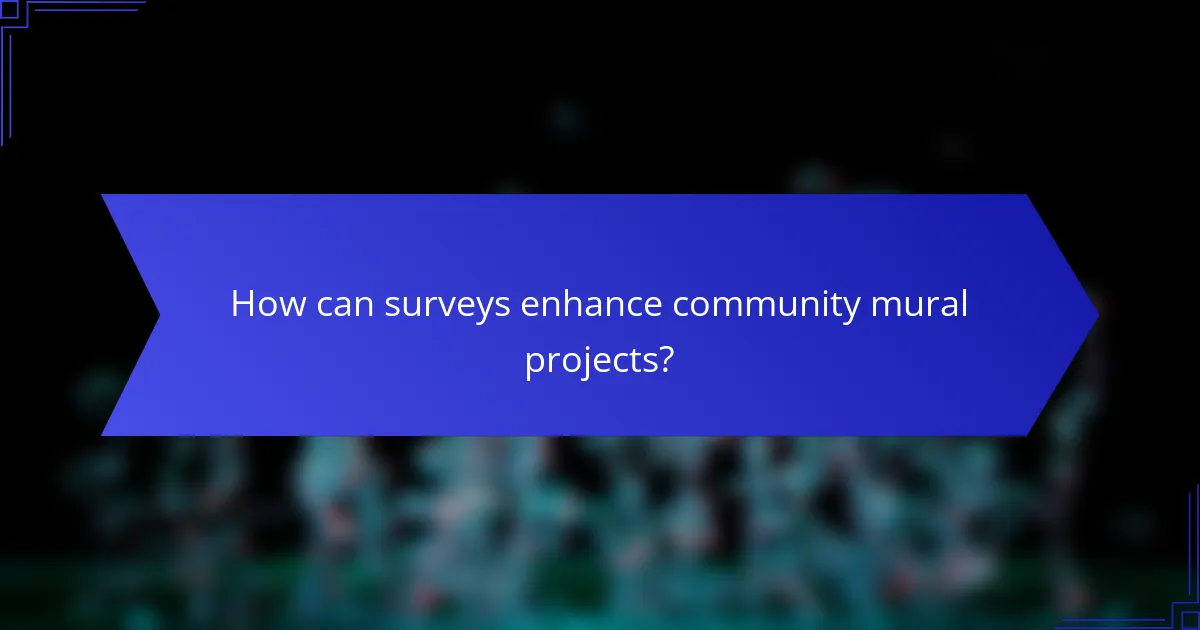
How can surveys enhance community mural projects?
Surveys can significantly enhance community mural projects by gathering valuable insights from local residents. They help project leaders understand community needs, preferences, and demographics, which can inform the design and execution of the mural.
Collecting demographic data
Collecting demographic data through surveys allows project organizers to identify the diverse backgrounds of community members. This information can include age, ethnicity, income levels, and education, which are essential for creating a mural that resonates with the entire community.
To effectively gather this data, consider using a mix of multiple-choice questions and open-ended responses. For example, a survey might ask participants to select their age range from options like 18-24, 25-34, or 35 and above. This approach can yield a clearer picture of the community’s demographics.
Measuring community engagement levels
Surveys are an effective tool for measuring community engagement levels in mural projects. By asking questions about residents’ awareness of the project, their participation in planning, and their overall interest, organizers can gauge how involved the community feels.
For instance, include questions like “How did you hear about the mural project?” or “Have you participated in any related events?” This data can help identify areas where engagement can be improved and ensure that future initiatives are more inclusive and effective.
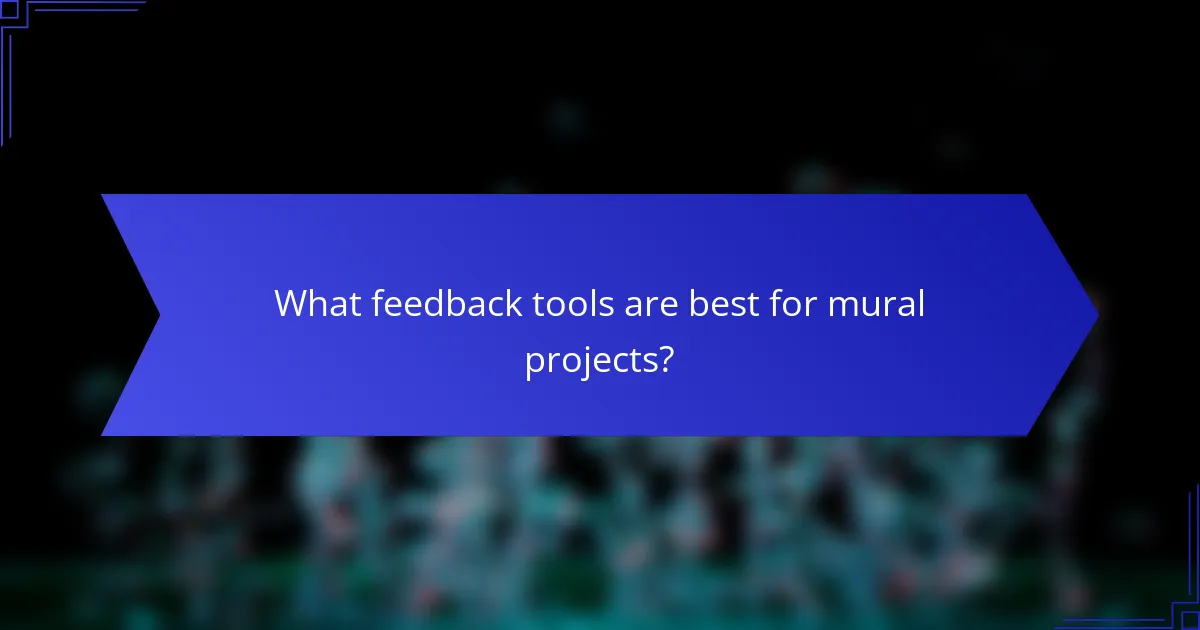
What feedback tools are best for mural projects?
Effective feedback tools for mural projects include online survey platforms and mobile feedback apps. These tools facilitate gathering community input, assessing public sentiment, and evaluating the impact of the mural.
Online survey platforms like SurveyMonkey
Online survey platforms, such as SurveyMonkey, allow project organizers to create detailed questionnaires that can be distributed via email or social media. These platforms typically offer customizable templates, enabling users to tailor questions to specific aspects of the mural project, such as design preferences or community impact.
When using online surveys, consider the target audience and ensure accessibility. Aim for a response rate of at least 20-30% to gather meaningful data. Keep surveys concise, ideally under 10 questions, to encourage participation.
Mobile feedback apps like Poll Everywhere
Mobile feedback apps like Poll Everywhere enable real-time audience engagement during community events or mural unveilings. Participants can respond instantly using their smartphones, providing immediate insights into their reactions and opinions.
These apps are particularly useful for interactive sessions, allowing for dynamic discussions based on live feedback. Ensure that the questions are clear and straightforward to maximize engagement. Consider using a mix of multiple-choice and open-ended questions to capture both quantitative and qualitative data.

What criteria should be considered in mural project evaluations?
Evaluating mural projects involves assessing various criteria that reflect their overall effectiveness and impact. Key considerations include artistic impact on the community and community participation rates, which together provide a comprehensive view of the project’s success.
Artistic impact on the community
The artistic impact of a mural project can be gauged by its aesthetic appeal and relevance to local culture. Consider how well the artwork resonates with community values and whether it enhances the visual landscape. Engaging local artists can often lead to more meaningful connections.
To evaluate artistic impact, gather feedback from community members through surveys or focus groups. Ask questions about emotional responses to the mural and its perceived value in representing local identity. This qualitative data can provide insights into the mural’s success.
Community participation rates
Community participation rates reflect how engaged residents are in the mural project, from planning to execution. High participation often indicates strong community interest and investment in the project, which can enhance its sustainability. Aim for diverse involvement across different demographics to ensure broad representation.
Track participation through attendance at planning meetings, volunteer sign-ups, and feedback submissions. Consider setting benchmarks, such as aiming for participation from at least 30% of local residents, to measure engagement effectively. Regularly communicate updates and opportunities for involvement to maintain interest and enthusiasm.
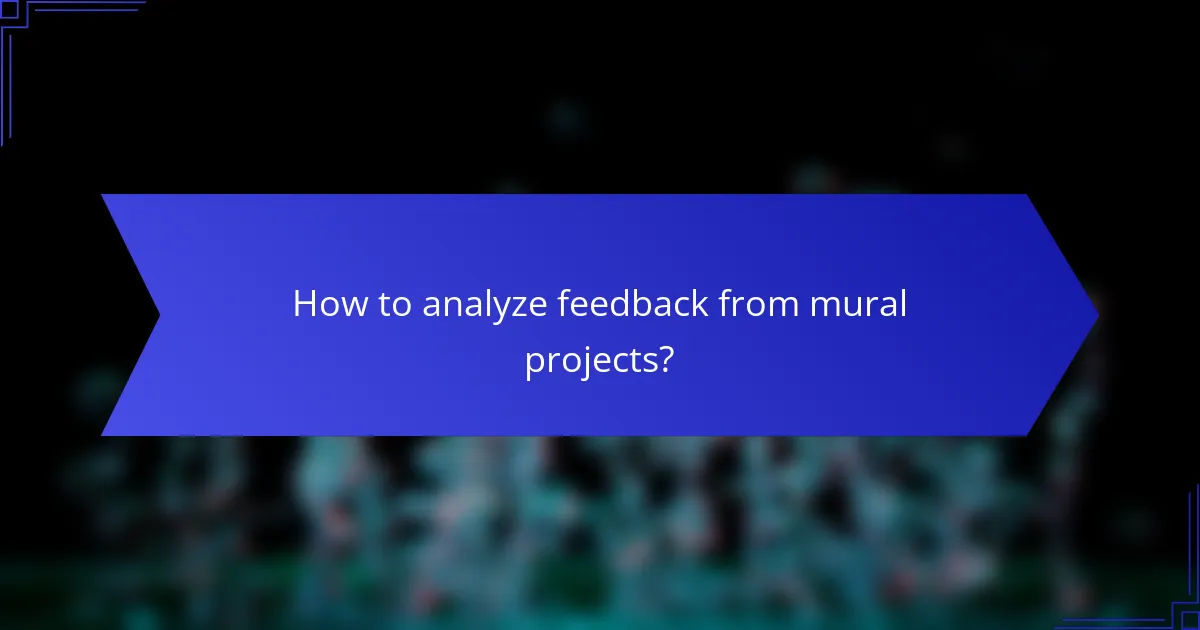
How to analyze feedback from mural projects?
Analyzing feedback from mural projects involves both qualitative and quantitative methods to gain a comprehensive understanding of community responses. By effectively evaluating open-ended responses and survey data, project leaders can identify strengths, areas for improvement, and overall community sentiment.
Qualitative analysis of open-ended responses
Qualitative analysis focuses on interpreting open-ended feedback, which provides rich insights into community perceptions. Start by categorizing responses into themes, such as artistic style, community impact, or emotional resonance. This thematic analysis can reveal common sentiments and unique perspectives.
Consider using coding techniques to systematically organize feedback. For instance, create codes for positive, negative, and neutral sentiments, then tally the frequency of each code to gauge overall community feelings. This method helps in understanding the nuances of community feedback beyond numerical data.
Quantitative analysis of survey data
Quantitative analysis involves examining numerical data from surveys to identify trends and patterns. Use statistical methods to analyze responses, such as calculating averages, percentages, and correlations. For example, if 70% of respondents rate the mural positively, this indicates strong community support.
When designing surveys, ensure questions are clear and focused to yield actionable data. Closed-ended questions with rating scales can facilitate easier analysis. Avoid leading questions that may bias responses. Regularly reviewing survey methodologies can enhance the reliability of the data collected.
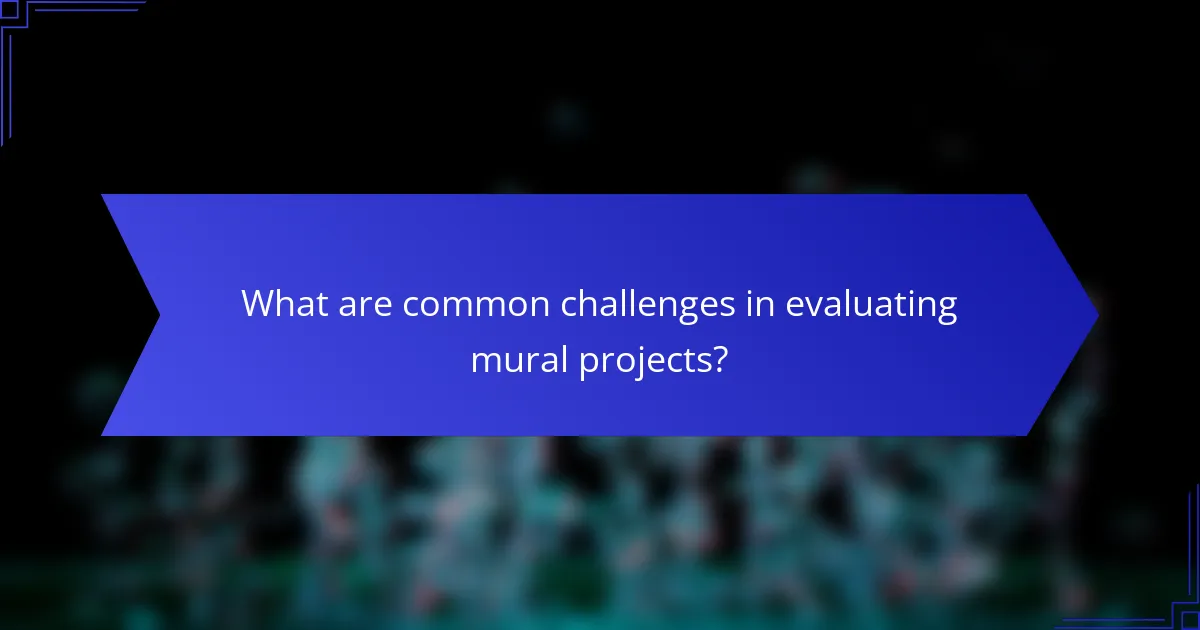
What are common challenges in evaluating mural projects?
Evaluating mural projects often faces challenges such as limited participant engagement and bias in feedback collection. These issues can hinder the effectiveness of assessments and the overall success of the project.
Limited participant engagement
Limited participant engagement occurs when community members do not actively participate in the evaluation process. This can lead to a lack of diverse perspectives and insights, which are crucial for understanding the mural’s impact.
To encourage engagement, consider using various outreach methods such as social media campaigns, community meetings, or surveys distributed through local organizations. Offering incentives, like small rewards or recognition, can also boost participation rates.
Bias in feedback collection
Bias in feedback collection can skew results and misrepresent community opinions. This often happens when feedback is gathered from a non-representative sample or when leading questions are used in surveys.
To minimize bias, ensure that feedback tools are designed to capture a wide range of opinions. Use neutral language in surveys and consider anonymous submissions to encourage honest responses. Regularly review and adjust your methods to ensure they remain fair and inclusive.
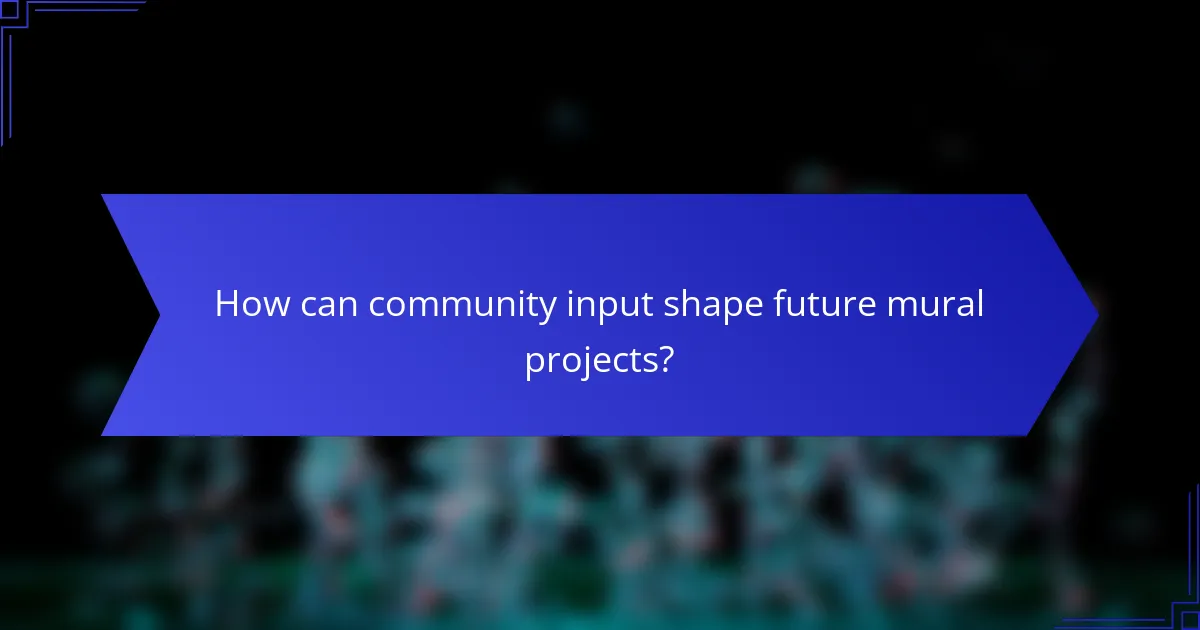
How can community input shape future mural projects?
Community input is essential for shaping future mural projects, as it ensures that the artwork reflects the values and interests of local residents. Engaging the community through surveys and feedback tools allows artists and planners to create murals that resonate with the audience and foster a sense of ownership.
Incorporating community suggestions
Incorporating community suggestions involves actively seeking input from local residents during the planning stages of mural projects. This can be achieved through surveys, public meetings, and social media polls, which allow individuals to express their ideas and preferences.
When collecting suggestions, consider using a mix of qualitative and quantitative methods. For example, open-ended questions can provide rich insights, while rating scales can help prioritize popular themes. Aim to gather feedback from a diverse range of community members to ensure inclusivity.
Adapting themes based on feedback
Adapting themes based on feedback is crucial for ensuring that the final mural aligns with community expectations. After gathering input, analyze the data to identify common themes and preferences that emerged from the responses.
For instance, if a significant number of residents express interest in cultural heritage, the mural can incorporate elements that celebrate local history. Regularly revisiting and adjusting the theme based on ongoing feedback can help maintain relevance and community support for the project.







